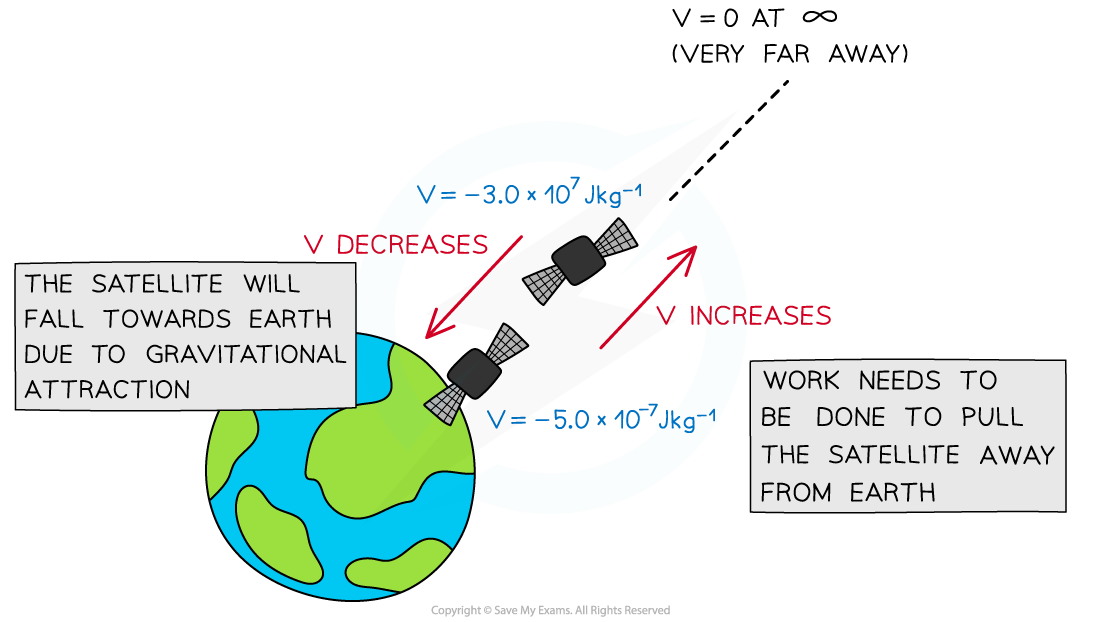Gravitational Potential (OCR A Level Physics): Revision Note
Exam code: H556
Gravitational Potential
Near the Earth's Surface
The gravitational potential energy (G.P.E) is the energy an object has when lifted off the ground given by the familiar equation:
G.P.E = mgΔh
When using this equation, the G.P.E on the surface of the Earth is taken to be zero
This means work is done to lift the object
This equation can only be used for objects that are near the Earth's surface
This is because, near Earth's surface, the gravitational field is approximated to be uniform
Far away from the Earth's surface, the gravitational field is radial because the Earth is a sphere
In a Radial Field
In a radial field, G.P.E is defined as the energy an object possesses due to its position in a gravitational field
The gravitational potential at a point is the gravitational potential energy per unit of mass for an object at that point
Gravity is always attractive, so work must be done on a mass to move it away to a point infinitely far away from every other mass
'Infinity' is the point at which the gravitational potential is zero
Therefore, since the potential energy of all masses increases as work is done on them to move them infinitely far away, the value of the potential is always negative
Gravitational potential is formally defined as:
The work done per unit of mass in bringing a mass from infinity to a defined point

Gravitational potential decreases as the satellite moves closer to the Earth. It increases if it moves further away, towards infinity, where gravitational potential is zero
Examiner Tips and Tricks
A common exam question requires you to explain the 'negative sign' for values of gravitational potential. Remember the two key facts:
Gravitational fields are always attractive
It requires work to move a mass to infinity, where potential is defined as zero
Since the potential energy of a mass therefore increases as it moves toward infinity (where V = 0), the value of the potential everywhere else must be negative.

Unlock more, it's free!
Did this page help you?